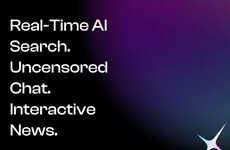A Talk with Ott Velsberg, Chief Data Officer of Estonia's Government
References: valitsus.ee
Ott Velsberg works as the Chief Data Officer for the Estonian government, which is heavily tied to overseeing both data science and data governance within the government system. His mission is to lead the series of government services toward development powered by artificial intelligence. In addition to this, Ott Velsberg is also a Ph.D. researching at the Umeå University and Uppsala University in the department of Informatics. His work highlights the functions of different information systems and how they work in the public sector with a focus on the Internet of Things. We got to sit down and talk to Ott about the challenges he faces in his role, the capabilities of artificial intelligence and IoT, as well as his understanding of where the industry is headed.
Can you tell us a little about yourself and your role?
I’m the chief data officer of Estonia’s government, that means I oversee data governance, data science, including AI. Essentially, data governance has a wide spectrum -- there’s open data, data quality, and so on.
I understand you work with government services, so there must be security sensitive data. How do you ensure that there is the protection of information with all the integrated technology? Or control sensitive data in the public sector?
Yes, so on the data privacy side, security is extremely important for us. Right now, every citizen can go online and through the government portal, see when the government accesses their data and for what reason as well. This builds a level of transparency for people to trust the government. This same approach applies to other domains as well, for instance, last year, we had an issue regarding ID cards, so we had to be transparent there as well (you can read more about it here). This is the issue, what we’re trying to fix. The aim is to build trust, this way citizens don’t stop using the services even if there are some issues. Similarly, we still have the same amount of people using ID cards (regardless of the “crisis”). When you talk about the security and so on, then the extremely important issue is data quality for us, we are currently working with issues regarding data governance as well so having that sense of requirements helps with guidelines. We also tried to rebrand the statistics of Estonia to a data agency so that they can help different agencies out there.
Can you tell us about some of the challenges that you face within your role?
I think there are not challenges rather than just the things you must do differently. I guess initially I was the first chief data officer and still am, of the Estonian government so it was at first, hard to get people on board but through showing that things can be done, like the conference we are at now, allows to build momentum so others soon follow. There was, for example, a case with an initiative called deep dive we have – essentially it is a workshop where we took one agency, department, or ministry, and we looked at the problems they have. We ended up with 35-50 different problems and we tried to understand which of those could be solved with data science, so machine learning, to set the scope, understand the requirements before we fund it. People weren’t at first too optimistic, they thought, oh another workshop. But after we had done those workshops a few times, we have covered more than 30 different project ideas for this initiative.
When did you first realize the potential of Artificial Intelligence in your career and how did you implement its capabilities to the government system?
So when I talk about AI, its machine learning and from the beginning, we launched the AI taskforce in August with the aim to understand how we can actually support the uptake of AI throughout the government and the nation so public and private sector, education, the legal perspective, and so on. Right now, when we talk about the practical use cases that we have ongoing, we have 16 of those. When I started, we had three, we have roughly 14 ongoing projects and have this ambitious goal that we should have 50 AI cases in the public sector by next year. If everything goes as planned, and it seems that it is, we should hit that milestone by next year. So roughly speaking, right now we have about 30 projects that are finished and ongoing. In March, roughly 25-35 asked for funding for additional projects, some of which are approved already.
At one point, we considered giving AI a legal entity status in the same way that you’d have citizens, people, companies, then you would have AI as a legal entity as well. We found that it's not actually required and no need to do that. We also found that from the legal perspective, nothing much needs to be done to support the use of AI throughout the nation and government. But also the main aim was to get the policy measures and how we can actually support the update, and we found out that Estonia’s public sector is actually the driver in Estonia, so the private sector has a lower adoption rate and we are standing out as one of the few countries where the public sector is the driving areas of AI – other countries include Saudi Arabia, Arab Emirates, Italy is somewhere close as well, where the private sector is now leading. In the United States, the private sector is leading, which ties back to transparency and digitalization. When you look at AI strategies, they are concentration on the legalization as part of AI, we can use the same funds on the projects and applying the AI, we see that many projects don’t need AI, and its kind of infrastructure on the developments. As we love to say, 97% of the whole government is digital.
With marriage, divorce, real estate, these are interactions you must complete in person and it's important to do so. These are just the reason why we are deploying AI, so the aim is to have a seamless practice, personalized government, and also thought to be a personal assistant as well. So, for example, which doesn’t require AI – if a child is born, the child is automatically registered for kindergarten, and you also get the allowance. It doesn’t need AI, you will get child allowance from the government and registered as well. The same thing for example with driving licenses, so if you have a driving license, a clean track record, no type of violations, and have the license for 5 years, you automatically get the permit to teach others, why do you have to go online and get it yourself? The whole government should be seamless and customer oriented, if you don’t want to receive the service, you can opt out always. AI jumps in with more different use cases, for example notifying people when they should consider a career change, re-educate themselves, matching jobs, and so on. Companies will look for people much more efficiently now, previously it was up to 58% success rate, and now its 72%.
Can you explain how algorithms are able to replace government workers? Does this benefit Estonia overall?
We are actually not thinking in terms of just replacing people but giving them the ability to do more meaningful jobs. So, it's not actually that people fear AI, machine learning or digitalization as a whole because of the idea that they will replace humans. If the unemployment rate is already so low, we also have jobs that require human thinking so for me, it enhances people. If one of your previous job descriptions was to go over pictures and describe if there is a cat or a bike in a picture, then that is not a meaningful job. Its something but its not meaningful. Now we are re-educating people, if you’ve been in customer service or whatever, we have chatbots, but we need to educate people, how to train models, how to continue doing that. In the end we always need customer support as well, so agriculture, for example, the map is public data as well, everyone can see it during the summertime, if the farmland has been mulched or not and why we detect the data is that the government pays out roughly 200 million euros of subsidies each year and one of the requirements, which is if we pay you to be a farmer or cut hay, then we assume you cut hay. So far, government officials have been going from one farm to another to do this on spot check up or analysis. People will only say I’m going to do it this next year, next week, or I did it a month ago. It was hard to determine trust or not and now we are able to cover the whole Estonian precision to be roughly 80% and save 50,000 euros from that alone (in total 650,000).
Again we are not replacing humans here, it is just a soft part of people driving to one place to another, so when you come to the different projects, you have to kind of KPIs, what you try to achieve, shouldn’t just jump in that it just AI, you have to really think through what the business case is and in different projects, we evaluate them deeply. Previously, you have this kind of rubber band running through the roads, or clickers, essentially systematic jobs that can be done more efficiently. The information by itself, replacing someone doesn’t produce value, it may be a better monetary efficiency by a little bit. The real value comes to understanding how traffic flows, where are the new bottlenecks. So, if we make new investments, we understand how it changes on the next intersection and the whole infrastructure as well.
Like if we make the investment in one area, then there may be traffic at the next intersection, meaning we didn’t fix anything but instead move the problem 100 meters along. In another case, we can fix the problem, make it a freeline and it can eliminate traffic jams in the next 1km radius, so essentially the goal is to make smarter decisions in the end. Now talking about garbage detection -- this is actually driven by this nongovernment organization called let’s do it, so the project is supported by our environmental ministry, but they are very driven themselves. It is important to understand where garbage is, how it gets to the ground, so they use image analysis to do that. It was partly funded by Microsoft from the United States, not our own subsidiary. The whole system is now carried out by this company called SIFR, they’re doing this awesome thing, but our plan is to map this to understand hidden garbage, dumpsters as well. It can also be applied in real time on intersections, government vehicles, buses, and so on. it helps people be more aware of how what we do affects them. It's not what the government isn’t doing, but so people understand how their behavior impacts the nature of the government and brings accountability.
I think the most annoying thing is that it's always easy to measure things through monetary, through efficiency, how money is saved because how do you measure quality? Yes, you can do analyses and so on but if the service gets better, then it brings in a new level of complexity and how to actually measure that level of improvement, we now try to do it on different government services, so how many of those services are proactive, how long it takes for people to give up, see their frustrations rates, and so on. from that side, you can start to measure changes in a bigger way
What direction do you think the Internet of Things and Artificial Intelligence will grow towards within the next ten years?
I really do believe that IoT is something that is underused right now, but it has a huge potential of collecting information we are unable to collect thus far. I will give you an example, so we have different sporting facilities, natural traits and so on, so if we want to make any more understanding, or museums for example, what does it feel like for a person to go to a museum, do they just walk through the whole thing? Or can we make that experience more personalized for them? So IoT is one option for us to make that happen. IoT in the end also comes to transparency, so we are already sharing, for example out winter road maintenance vehicle information online by the government, so as citizens, you can see when the vehicle is supposed to come and clean your roads during the winter time, so similar to the Waze app, people are able to understand where those road maintenance vehicles are so they can take more efficient routes. When we take energy consumptions and so on, it gives a new way for both the citizen and the government to understand energy consumption on a more individuals level and individuals can already pull together their data to be a bigger buyer and haggle prices – water is the same way. I see a huge potential, the risk is the way that the way the government now funds the different IoT projects are hardware, but most IT projects are funded as software. So here comes the mismatch, where we assume that IoT is an end by itself when it is actually a tool.
Can you tell us a little about yourself and your role?
I’m the chief data officer of Estonia’s government, that means I oversee data governance, data science, including AI. Essentially, data governance has a wide spectrum -- there’s open data, data quality, and so on.
I understand you work with government services, so there must be security sensitive data. How do you ensure that there is the protection of information with all the integrated technology? Or control sensitive data in the public sector?
Yes, so on the data privacy side, security is extremely important for us. Right now, every citizen can go online and through the government portal, see when the government accesses their data and for what reason as well. This builds a level of transparency for people to trust the government. This same approach applies to other domains as well, for instance, last year, we had an issue regarding ID cards, so we had to be transparent there as well (you can read more about it here). This is the issue, what we’re trying to fix. The aim is to build trust, this way citizens don’t stop using the services even if there are some issues. Similarly, we still have the same amount of people using ID cards (regardless of the “crisis”). When you talk about the security and so on, then the extremely important issue is data quality for us, we are currently working with issues regarding data governance as well so having that sense of requirements helps with guidelines. We also tried to rebrand the statistics of Estonia to a data agency so that they can help different agencies out there.
Can you tell us about some of the challenges that you face within your role?
I think there are not challenges rather than just the things you must do differently. I guess initially I was the first chief data officer and still am, of the Estonian government so it was at first, hard to get people on board but through showing that things can be done, like the conference we are at now, allows to build momentum so others soon follow. There was, for example, a case with an initiative called deep dive we have – essentially it is a workshop where we took one agency, department, or ministry, and we looked at the problems they have. We ended up with 35-50 different problems and we tried to understand which of those could be solved with data science, so machine learning, to set the scope, understand the requirements before we fund it. People weren’t at first too optimistic, they thought, oh another workshop. But after we had done those workshops a few times, we have covered more than 30 different project ideas for this initiative.
When did you first realize the potential of Artificial Intelligence in your career and how did you implement its capabilities to the government system?
So when I talk about AI, its machine learning and from the beginning, we launched the AI taskforce in August with the aim to understand how we can actually support the uptake of AI throughout the government and the nation so public and private sector, education, the legal perspective, and so on. Right now, when we talk about the practical use cases that we have ongoing, we have 16 of those. When I started, we had three, we have roughly 14 ongoing projects and have this ambitious goal that we should have 50 AI cases in the public sector by next year. If everything goes as planned, and it seems that it is, we should hit that milestone by next year. So roughly speaking, right now we have about 30 projects that are finished and ongoing. In March, roughly 25-35 asked for funding for additional projects, some of which are approved already.
At one point, we considered giving AI a legal entity status in the same way that you’d have citizens, people, companies, then you would have AI as a legal entity as well. We found that it's not actually required and no need to do that. We also found that from the legal perspective, nothing much needs to be done to support the use of AI throughout the nation and government. But also the main aim was to get the policy measures and how we can actually support the update, and we found out that Estonia’s public sector is actually the driver in Estonia, so the private sector has a lower adoption rate and we are standing out as one of the few countries where the public sector is the driving areas of AI – other countries include Saudi Arabia, Arab Emirates, Italy is somewhere close as well, where the private sector is now leading. In the United States, the private sector is leading, which ties back to transparency and digitalization. When you look at AI strategies, they are concentration on the legalization as part of AI, we can use the same funds on the projects and applying the AI, we see that many projects don’t need AI, and its kind of infrastructure on the developments. As we love to say, 97% of the whole government is digital.
With marriage, divorce, real estate, these are interactions you must complete in person and it's important to do so. These are just the reason why we are deploying AI, so the aim is to have a seamless practice, personalized government, and also thought to be a personal assistant as well. So, for example, which doesn’t require AI – if a child is born, the child is automatically registered for kindergarten, and you also get the allowance. It doesn’t need AI, you will get child allowance from the government and registered as well. The same thing for example with driving licenses, so if you have a driving license, a clean track record, no type of violations, and have the license for 5 years, you automatically get the permit to teach others, why do you have to go online and get it yourself? The whole government should be seamless and customer oriented, if you don’t want to receive the service, you can opt out always. AI jumps in with more different use cases, for example notifying people when they should consider a career change, re-educate themselves, matching jobs, and so on. Companies will look for people much more efficiently now, previously it was up to 58% success rate, and now its 72%.
Can you explain how algorithms are able to replace government workers? Does this benefit Estonia overall?
We are actually not thinking in terms of just replacing people but giving them the ability to do more meaningful jobs. So, it's not actually that people fear AI, machine learning or digitalization as a whole because of the idea that they will replace humans. If the unemployment rate is already so low, we also have jobs that require human thinking so for me, it enhances people. If one of your previous job descriptions was to go over pictures and describe if there is a cat or a bike in a picture, then that is not a meaningful job. Its something but its not meaningful. Now we are re-educating people, if you’ve been in customer service or whatever, we have chatbots, but we need to educate people, how to train models, how to continue doing that. In the end we always need customer support as well, so agriculture, for example, the map is public data as well, everyone can see it during the summertime, if the farmland has been mulched or not and why we detect the data is that the government pays out roughly 200 million euros of subsidies each year and one of the requirements, which is if we pay you to be a farmer or cut hay, then we assume you cut hay. So far, government officials have been going from one farm to another to do this on spot check up or analysis. People will only say I’m going to do it this next year, next week, or I did it a month ago. It was hard to determine trust or not and now we are able to cover the whole Estonian precision to be roughly 80% and save 50,000 euros from that alone (in total 650,000).
Again we are not replacing humans here, it is just a soft part of people driving to one place to another, so when you come to the different projects, you have to kind of KPIs, what you try to achieve, shouldn’t just jump in that it just AI, you have to really think through what the business case is and in different projects, we evaluate them deeply. Previously, you have this kind of rubber band running through the roads, or clickers, essentially systematic jobs that can be done more efficiently. The information by itself, replacing someone doesn’t produce value, it may be a better monetary efficiency by a little bit. The real value comes to understanding how traffic flows, where are the new bottlenecks. So, if we make new investments, we understand how it changes on the next intersection and the whole infrastructure as well.
Like if we make the investment in one area, then there may be traffic at the next intersection, meaning we didn’t fix anything but instead move the problem 100 meters along. In another case, we can fix the problem, make it a freeline and it can eliminate traffic jams in the next 1km radius, so essentially the goal is to make smarter decisions in the end. Now talking about garbage detection -- this is actually driven by this nongovernment organization called let’s do it, so the project is supported by our environmental ministry, but they are very driven themselves. It is important to understand where garbage is, how it gets to the ground, so they use image analysis to do that. It was partly funded by Microsoft from the United States, not our own subsidiary. The whole system is now carried out by this company called SIFR, they’re doing this awesome thing, but our plan is to map this to understand hidden garbage, dumpsters as well. It can also be applied in real time on intersections, government vehicles, buses, and so on. it helps people be more aware of how what we do affects them. It's not what the government isn’t doing, but so people understand how their behavior impacts the nature of the government and brings accountability.
I think the most annoying thing is that it's always easy to measure things through monetary, through efficiency, how money is saved because how do you measure quality? Yes, you can do analyses and so on but if the service gets better, then it brings in a new level of complexity and how to actually measure that level of improvement, we now try to do it on different government services, so how many of those services are proactive, how long it takes for people to give up, see their frustrations rates, and so on. from that side, you can start to measure changes in a bigger way
What direction do you think the Internet of Things and Artificial Intelligence will grow towards within the next ten years?
I really do believe that IoT is something that is underused right now, but it has a huge potential of collecting information we are unable to collect thus far. I will give you an example, so we have different sporting facilities, natural traits and so on, so if we want to make any more understanding, or museums for example, what does it feel like for a person to go to a museum, do they just walk through the whole thing? Or can we make that experience more personalized for them? So IoT is one option for us to make that happen. IoT in the end also comes to transparency, so we are already sharing, for example out winter road maintenance vehicle information online by the government, so as citizens, you can see when the vehicle is supposed to come and clean your roads during the winter time, so similar to the Waze app, people are able to understand where those road maintenance vehicles are so they can take more efficient routes. When we take energy consumptions and so on, it gives a new way for both the citizen and the government to understand energy consumption on a more individuals level and individuals can already pull together their data to be a bigger buyer and haggle prices – water is the same way. I see a huge potential, the risk is the way that the way the government now funds the different IoT projects are hardware, but most IT projects are funded as software. So here comes the mismatch, where we assume that IoT is an end by itself when it is actually a tool.
Trend Themes
1. Government AI Adoption - Estonia's public sector has a lower AI adoption rate as the government is leading it, providing disruptive innovation opportunities for governments around the world.
2. Iot for Personalization - IoT adoption has a huge potential for personalizing experiences from museums to sporting events, providing innovative customer-centric opportunities for industries everywhere.
3. Transparent Security Governance - Estonia's success in building trust among citizens with its transparent approach to security governance highlights the potential for disruptive innovation in security for governments and industries alike.
Industry Implications
1. Government - The public sector has a unique opportunity to embrace AI and transparent security governance, paving the way for innovation in government services globally.
2. Technology - The potential to merge IoT, AI, and personalization, presents an opportunity for technology companies to develop new innovative solutions for customers.
3. Security - The push for transparent security governance highlights an opportunity for the security industry to embrace new technologies, such as AI, to provide innovative and secure solutions.
1.9
Score
Popularity
Activity
Freshness






















